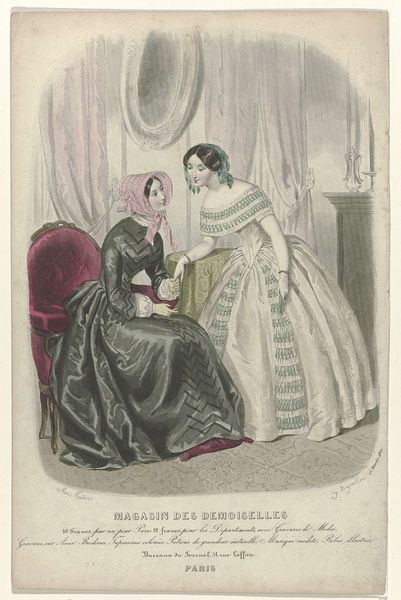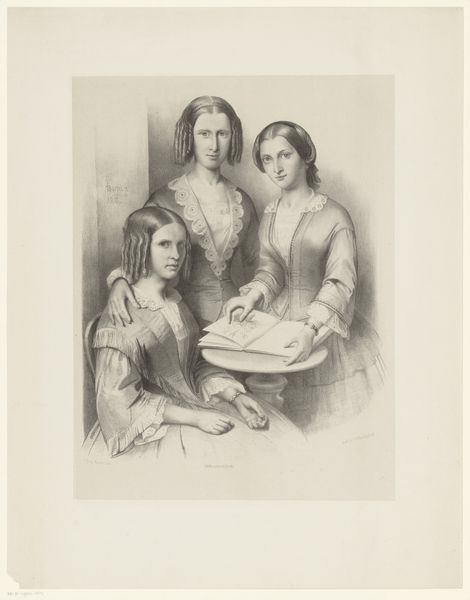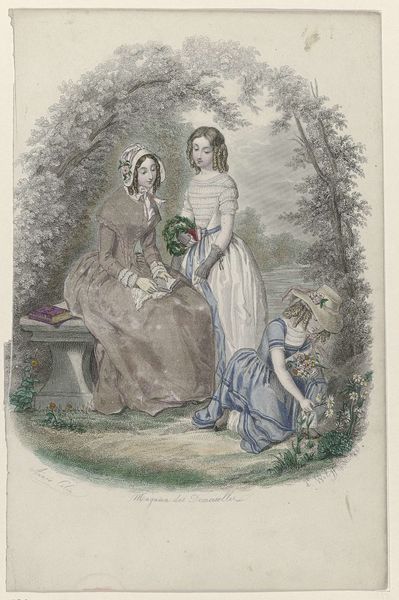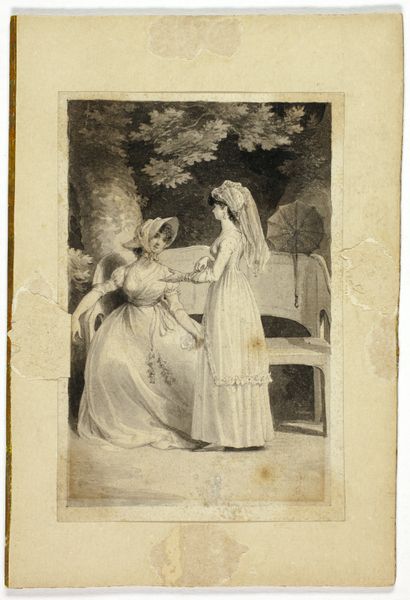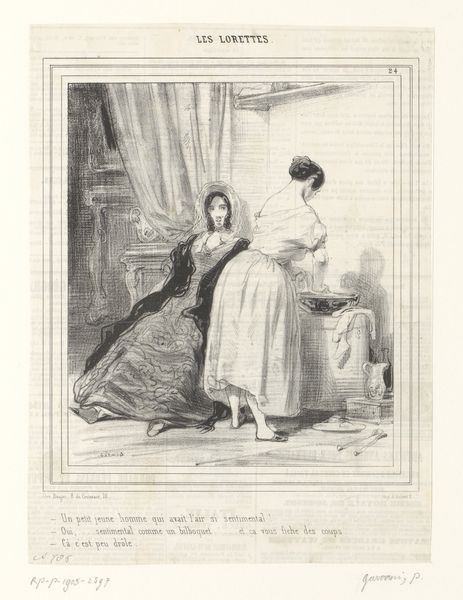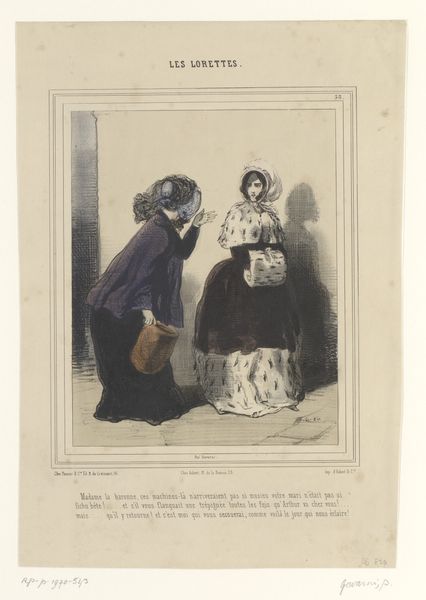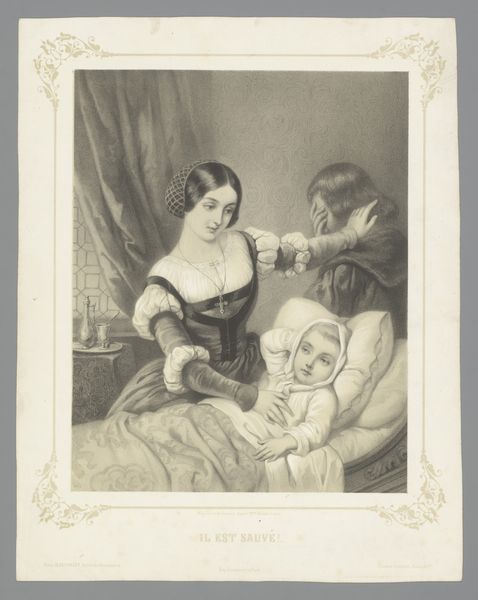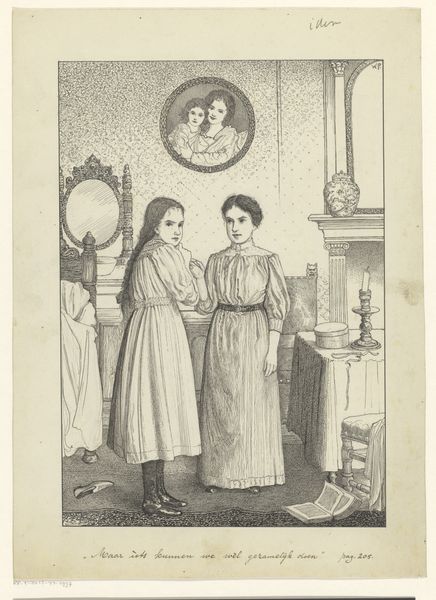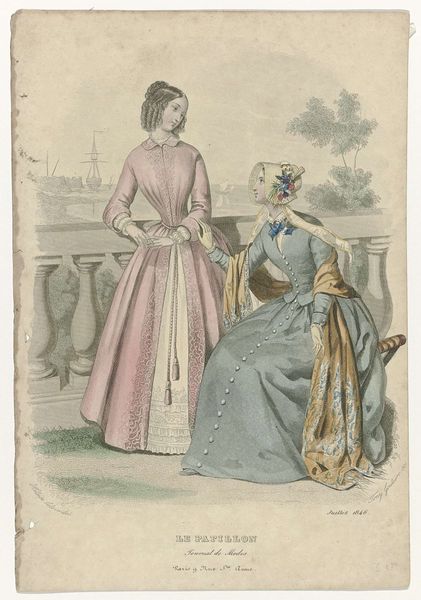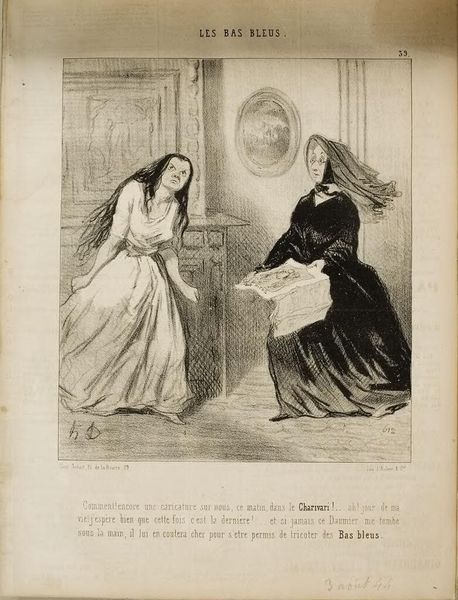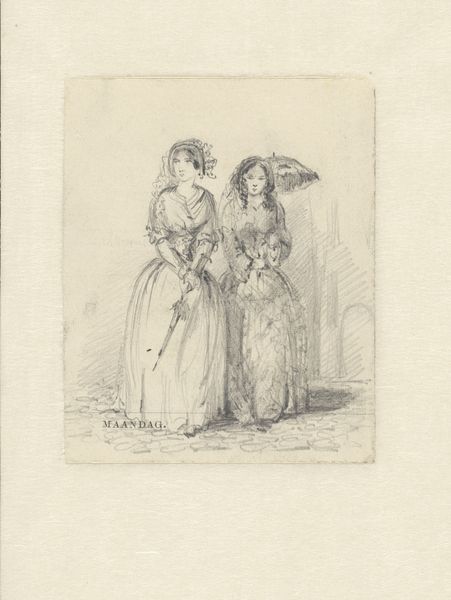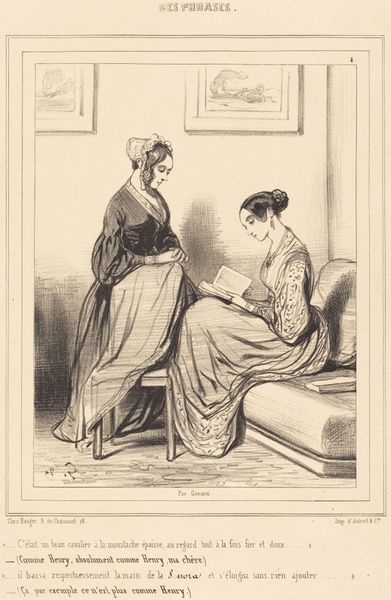
The countesses Anna and Josefa Thun-Hohenstein (born respectively 1815) 1840
0:00
0:00
alexanderclarot
Private Collection
#
portrait
#
figuration
#
romanticism
#
genre-painting
#
watercolor
Dimensions: 40 x 28 cm
Copyright: Public domain
Curator: How delicate; almost like a dream. The light palette feels feminine, and I am drawn to how carefully considered and executed it seems to be. Editor: Indeed. What we're observing is a work entitled "The countesses Anna and Josefa Thun-Hohenstein," likely a watercolor executed around 1840. It seems like this intimate double portrait captures a moment of sisterly connection, but I’m interested in exploring the social implications within the Romantic style. Curator: The architectural detail in the background feels symbolically charged; a broken column perhaps hinting at mortality or the passage of time against the women’s grace and refinement. Their expressions are fascinating. Editor: It’s key to note their positionality as members of the aristocracy. Though their gestures and mannerisms are demure, there's a latent sense of entitlement. How are the symbols and artistic conventions playing into power dynamics of gender and class in the period? Curator: Interesting you say that. Looking closer, the younger sister seems to gaze upwards, seemingly thinking or in conversation. Whereas the second one has books on hand, one almost hinting the position of her class in the world, in pursuit of a certain level of academic endeavors. What story does their wardrobe or dress color hint? Editor: Absolutely, Anna holds books symbolizing knowledge, an accepted sphere of influence. But are these women afforded power beyond this carefully delineated space? How complicit are portraiture conventions in both mirroring and perpetuating prescribed gender roles? The very pale-skinned look and light blue is almost ethereal in nature. What's your reading? Curator: The cool, pastel blues in their attire, with these highlights, suggest innocence and virtue, almost alluding to classic allegorical paintings depicting purity, with these white gowns of hers. However, Josefa stands almost guarding Anna behind, which feels meaningful to our modern view. Editor: It does invite layered contemplation on representation and agency, doesn’t it? Curator: Agreed, this romantic vision feels subtly defiant in light of these power relations. Editor: Thank you for speaking with me, and perhaps offering other lenses to consider the relationship of women in those period pieces.
Comments
No comments
Be the first to comment and join the conversation on the ultimate creative platform.
